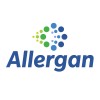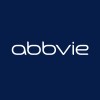
Ginkgo Biloba and Ocular Blood Flow in Primary Open-angle Glaucoma
GlaucomaOpen-AngleGlaucoma is one of the leading causes of blindness. Ginkgo biloba may be part of an effective treatment strategy for glaucoma because it has been shown to improve blood flow, it has antioxidant properties, it can relax smooth muscle, and it can protect neurons from damage. The goal of our study was to determine whether Ginkgo biloba would result in increased ocular blood flow which may protect against glaucoma damage.

The Impact of Topical Prostaglandins on the Biomechanical Properties of the Cornea in Patients With...
GlaucomaOpen-AngleThe purpose of this study is to determine the influence of topical prostaglandin analog (PGA) medication on corneal biomechanical properties in patients undergoing PGA treatment for open-angle glaucoma.

XEN-45 Gel Stent Versus Trabeculectomy in Glaucoma: Gold-Standard Pathway Study (GPS)
GlaucomaThe purpose of this study is to compare the safety and efficacy of XEN-45 to trabeculectomy in participants with open angle glaucoma refractory to topical medical therapy.

Cataract Surgery Combined With Endoscopic Goniosynechialysis for Advanced Primary Angle Closure...
GlaucomaClosed-AngleIn this prospective study, consecutive patients with advanced PACG and cataract who underwent Phaco-IOL-EGSL were invited to participate. Inclusion and exclusion criteria Inclusion criteria included: a diagnosis of PACG according to the International Society of Geographical & Epidemiological Ophthalmology (ISGEO) diagnostic criteria,14 visual field score ≥18 calculated (as per the method used in the Advanced Glaucoma Intervention Study [AGIS]),15 treatment with IOP-lowering drugs for more than 3 months, and mild to moderate cataract. Exclusion criteria included: secondary angle-closure glaucoma and previous history of surgery, except laser peripheral iridotomy. Preoperative and postoperative examinations Preoperative examinations included: best corrected logMAR visual acuity (BCVA), number of intraocular pressure (IOP) lowering drugs, slit lamp and fundus examination, gonioscopy, Goldmann applanation tonometry and ultrasound biomicroscopy (UBM). Visual field tests were conducted with a Humphrey Visual Field Analyzer II. All patients were reviewed at 1 week, 1 month, 3 months, 6 months and 12 months after surgery. The number of IOP-lowering drugs and IOP was observed and recorded at each follow-up. The extent of peripheral anterior synechiae , the BCVA and the visual field were recorded at 12 months following surgery. Surgery procedure All patients used IOP-lowering drugs before surgery; IOP was controlled under 21mmHg where possible. If the preoperative IOP was over 40mmHg a preoperative anterior chamber paracentesis was performed. All surgeries were performed by the same experienced surgeon (WP). Intraoperative and postoperative complications were recorded. In all patients, phacoemulsification was performed first. After implantation of the IOL, an ophthalmic endoscope (OE) probe was inserted into the anterior chamber to visualize the PAS through the main incision and side incision. A viscoelastic agent was injected towards the root of the iris where PAS existed. Then a blunt iris spatula was used to release the areas where PAS remained under direct view with the OE. Complete synechialysis was confirmed under the direct view with the OE at the end of the procedure. Success criteria Based on the AGIS study, we defined surgical success as follows: (1) Standard A: IOP<14mmHg using none or one type of IOP-lowering drug; (2) Standard B: IOP <18mmHg using none or one type of IOP-lowering drug.

A Study to Assess an Automated Laser Device for Direct Selective Laser Trabeculoplasty
Open Angle GlaucomaOcular HypertensionGlaucoma is an eye disease that results in damage to the optic nerve that progresses over time. One of the main risk factors in glaucoma is an increase in intraocular pressure, caused by a build-up of fluid in the eye. Glaucoma can result in blindness if left untreated and as such it is extremely important to diagnose and treat the condition. Selective Laser Trabeculoplasty (SLT) is a laser treatment that facilitates the outflow of fluid from inside the eye. This has the potential of reducing the intraocular pressure within the eye (the main way in which this disease is treated since there is no cure) and may assist in helping to control the progression of this disease. SLT (standard treatment) is a technique routinely carried out by glaucoma specialists. It is conducted using a special type of lens (goniolens) that gently sits on the front surface of the eye. The procedure takes approximately 5 minutes in duration. This new treatment, Direct Selective Laser Trabeculoplasty (DSLT) is performed directly, without there being any need to use a goniolens which sits on the eye, and it is a shorter and simpler technique to conduct when compared to the standard SLT technique. The purpose of this study is to assess the hypothesis that the treatment by new automated device for DSLT is not worse in comparison with the standard SLT and determine that it is effective in reducing intraocular pressure.

Safety and IOP-Lowering Effects of WB007
GlaucomaPrimary Open Angle1 moreThe study evaluated the safety and IOP-lowering effects of WB007 in adults with primary open-angle glaucoma or ocular hypertension in both eyes. This was a 2-part study. Part 1 was a 3-period dose escalation that evaluated 3 concentrations of WB007 ophthalmic solution following a single dose in one eye. Part 2 was a randomized, double-masked, parallel comparison that evaluated two concentrations of WB007 (selected based on Part 1 results) in both eyes compared with timolol 0.5% for 14 days.

A Phase 3b Study Evaluating the 24-Hour Intraocular Pressure Lowering Effect of Bimatoprost SR in...
Open-Angle GlaucomaOcular HypertensionThis study will evaluate the 24-hour intraocular pressure lowering effect and safety after a single administration of Bimatoprost SR in patients with Open-Angle Glaucoma or Ocular Hypertension

Investigation of the iStent Inject® Devices in Open-Angle Glaucoma
GlaucomaOpen-AngleThe aim of this study is to evaluate the safety and intraocular pressure (IOP) lowering effect of two iStent inject devices in combination with cataract surgery in patients with mild-to-moderate open-angle glaucoma.

Efficacy and Tolerability of an Innovative Formulation of BAK-free Latanoprost
Primary Open-angle GlaucomaThis study evaluates the efficacy and tolerability of a new formulation of latanoprost without Benzalkonium Chloride (BAK-free). Patients with open-angle glaucoma who were using BAK-containing latanoprost ophthalmic solution for ≥6 months, switched to BAK-free latanoprost ophthalmic emulsion.

Safety and Efficacy of Ophthalmic Phentolamine Mesylate in Glaucoma
Open Angle GlaucomaOcular HypertensionThe objectives of this study are: To evaluate the efficacy of Phentolamine Mesylate to lower intra-ocular pressure (IOP) in the treatment of Open-Angle Glaucoma (OAG) and Ocular Hypertension (OHT). To evaluate the ocular and systemic safety of Phentolamine Mesylate compared to its vehicle. To evaluate additional efficacy of Phentolamine Mesylate to improve visual performance.
